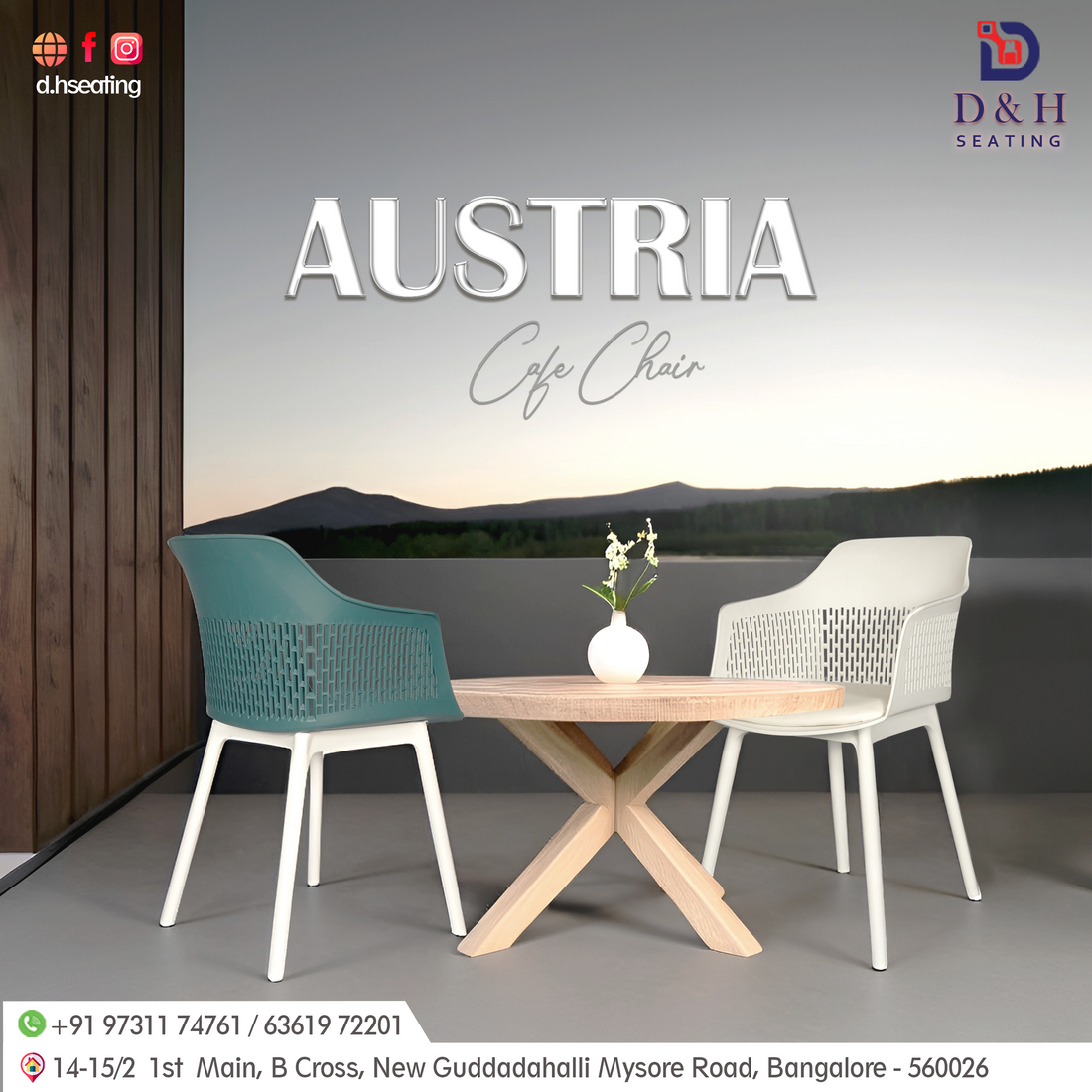
What Makes a Café Chair Durable?
Share
Cafes are not just a location to grab a cup of coffee—it's a social hub where people may relax, work, chat, and relax. In the midst of The lively hum of dialogue and clinking cups, one element that gets ignored but is integral to the café experience is the chair. Long-lasting cafe chairs are the unseen heroes that team up comfort, functionality, and durability to produce the best experience in the high volume of traffic in busy cafe.
In this blog, we’ll dive into what makes a café chair that is quite powerful—assistant café owners, designers, and enthusiasts make wise decisions that ensure their seating lasts and impresses day after day.
Why Durability Matters in Café Chairs
Before exploring the factors that contribute to durability, it’s worth understanding why durability is very important in café chairs:
High Usage: Café chairs endure continuous use as customers frequently sit, stand, and sometimes pull or drag them around.
Diverse Users: Chairs need to be able to hold all sizes and weights of people safely.

Aesthetic Permanence: A tired-looking chair soon makes the best The café seems uninteresting.. and unwelcoming.
Cost-Effectiveness: Long-lasting chairs minimize frequent replacement, which is cost-effective in the long term.
Safety: Stable chairs avert accidents from collapse or tipping over.
Considering these facts, long-lasting café chairs are an investment in client pleasure well to be business efficiency.
Key Factors That Make a Café Chair Lasting
1. Durable Frame Material
"Durability primarily depends on the strength of the chair’s frame and the quality of its craftsmanship."
The most common ones are:
Solid Wood: Hardwood such to be oak, maple, or beech provides high strength and a classic appearance. Wood that has been When completed correctly, will withstand scratches and dents better than softwoods.
Metal: Steel or aluminium frames give more power.. Steel is heavier and usually powder-coated to resist most, but aluminium is lighter and corrosion-resistant by nature.
Combination Frames: Certain chairs employ metal frames with wood or woven seats and backs, marrying strength to fashion.
The choice is based on the café's ambiance and design; interior is provided by real wood., while metal is quite appropriate for outside use.
2. Quality Joinery and Construction
No matter how strong the material, poor construction can lead to failure.
Look for:
Reinforced Joints: Chairs with dowel joints, mortise-and-tenon joints, or metal brackets provide the most stability.
Screws and Bolts: Heavy-duty fasteners, not glue or nails, are used in sturdy chairs.
Welding Quality: In metal chairs, clean and strong welds with no cracks or gaps provide durability.
Cross-Bracing: Supporting elements between legs or below the seat minimize wobbling and raise the load capability.
3. Strong Load Capacity
Café chairs must hold a variety of safely. A minimum amount of for loads of 120–150 kg (265–330 lbs) is suggested by industry standards. Properly designed chairs avoid damage and accidents due to overpressure.

4. Long-Lasting Finishes
The protective coating guards the chair against scratches, stains, and moisture damage.
Powder Coating (Metal Chairs): Provides a resilient, protective finish that resists rust, chips, and colour fading.
Lacquer or Varnish (Wooden Chairs): Provides a glossy or matte barrier against moisture and stains.
UV-Resistant Coatings: On outdoor chairs, protects against sun damage.
Sealed Edges: Keeps water from seeping into wood and warping or splitting it.
"To extend the life of the chair, maintain its finishes regularly."
5. Comfortable but Sturdy Seating and Back Material
Durability isn't just frames—seats and backs need to last against wear and tear while holding on to comfort:
Solid Wood or Plywood: Sturdy, simple to maintain, and resistant to sagging over time.
Woven Cane or Rattan: adaptability and breathability, with a handmade look—best when paired with sturdy metal frames.
Upholstered Seats: opt for high-density foam with long-lasting, stain-resistant fabrics or vinyl that withstand spills and abrasion.
Plastic or Polypropylene: Lightweight, easy to clean, and weather-resistant for outdoor cafés.
6. Rust and Corrosion Resistance
For wet or humid locations (patios or messy cafés), corrosion resistance is crucial:
Stainless Steel or Aluminium: Resists rust in humid or wet environments.
Powder-Coated Steel: Rust prevention and chip resistance.
Plastic Components: Resistant to rust and easy to detach when needed.
7. Ease of Maintenance
Long-lasting chairs to be taken into how easy they are to clean and maintain. Chairs with clean designs, washable cushions, and non-absorbent surfaces minimize labour and prolong furniture life.
8. Stickability and Storage Design
Cafés need seating. Stackable chairs with tough construction prevent damage when stacked or rearranged, minimizing wear on legs and concludes.
Real-World Durability: Tips for Café Owners
Check Often: Secure screws and bolts so they do not wobble before they cause damage.
Train Personnel: Educate on proper handling—lifting instead of dragging chairs will protect the completions and legs.
Apply Chair Glides or Floor Guards: Minimize wear and rip, especially on hard surfaces.
Select Proper Chairs for The Scene: Outside chairs need weather resistance to be a top priority; indoor chairs may emphasize comfort and design.
Replace Worn Parts Early: Replacing faulty cushions, gas lifts, or screws prevents whole chairs from early retirement.
How Durable Chairs Benefit Your Café Business

Customer Satisfaction: Comfortable, durable seating fosters extended visits and return customers.
Brand Image: Premium furniture showcases a commitment to professionalism and meticulous craftsmanship.
Operational Efficiency: Reduced downtime from damaged chairs translates into smoother service.
Sustainability: Long-lasting chairs save on waste and environmental footprint from frequent replacement.
